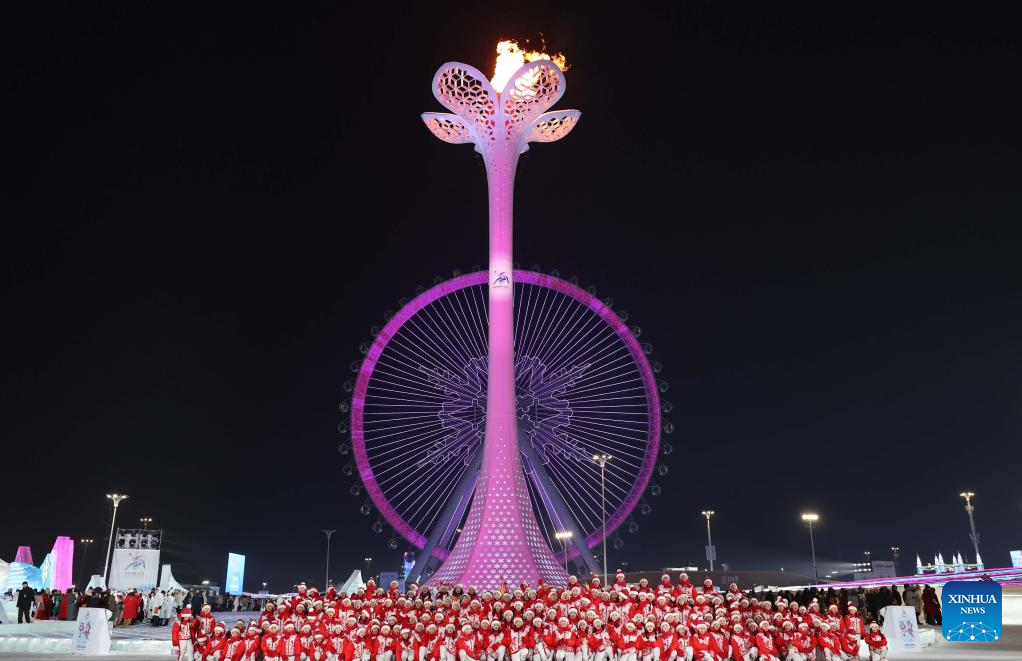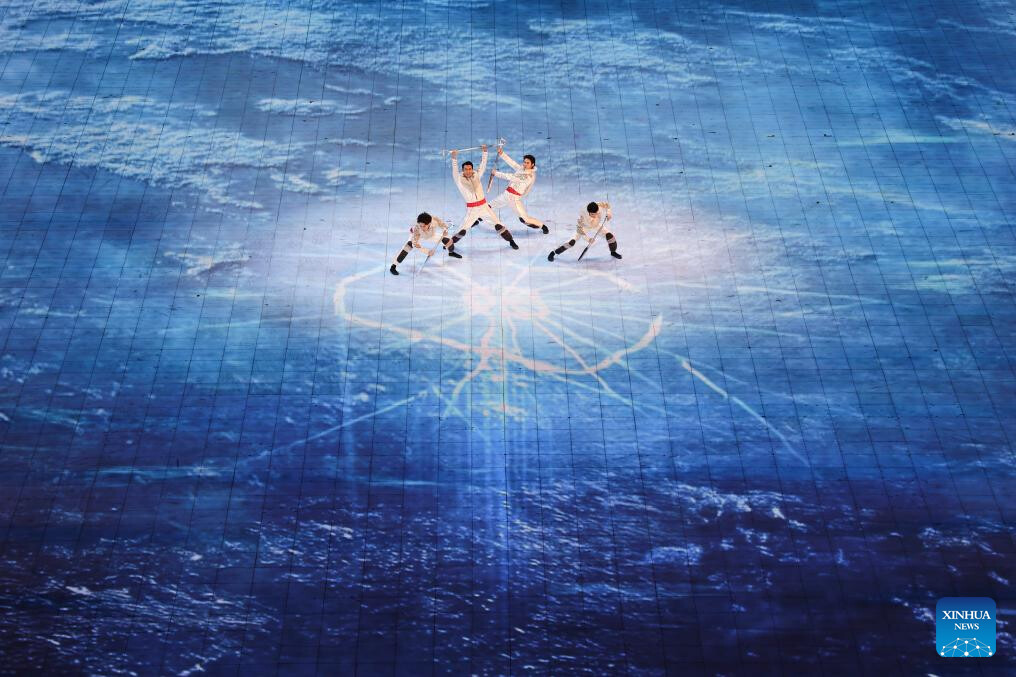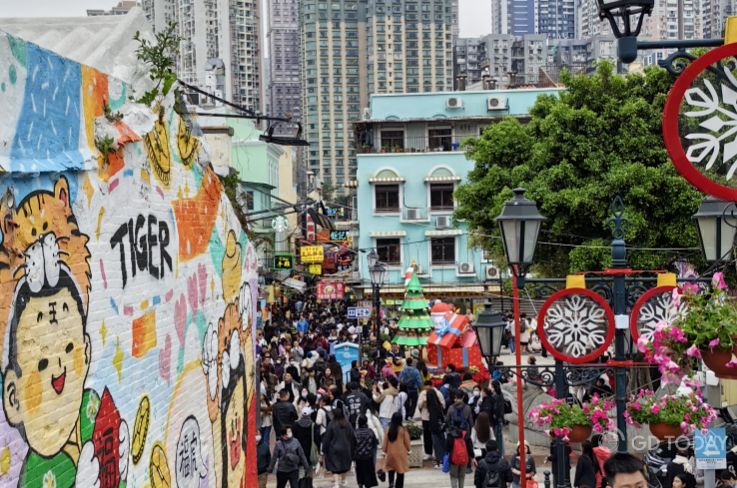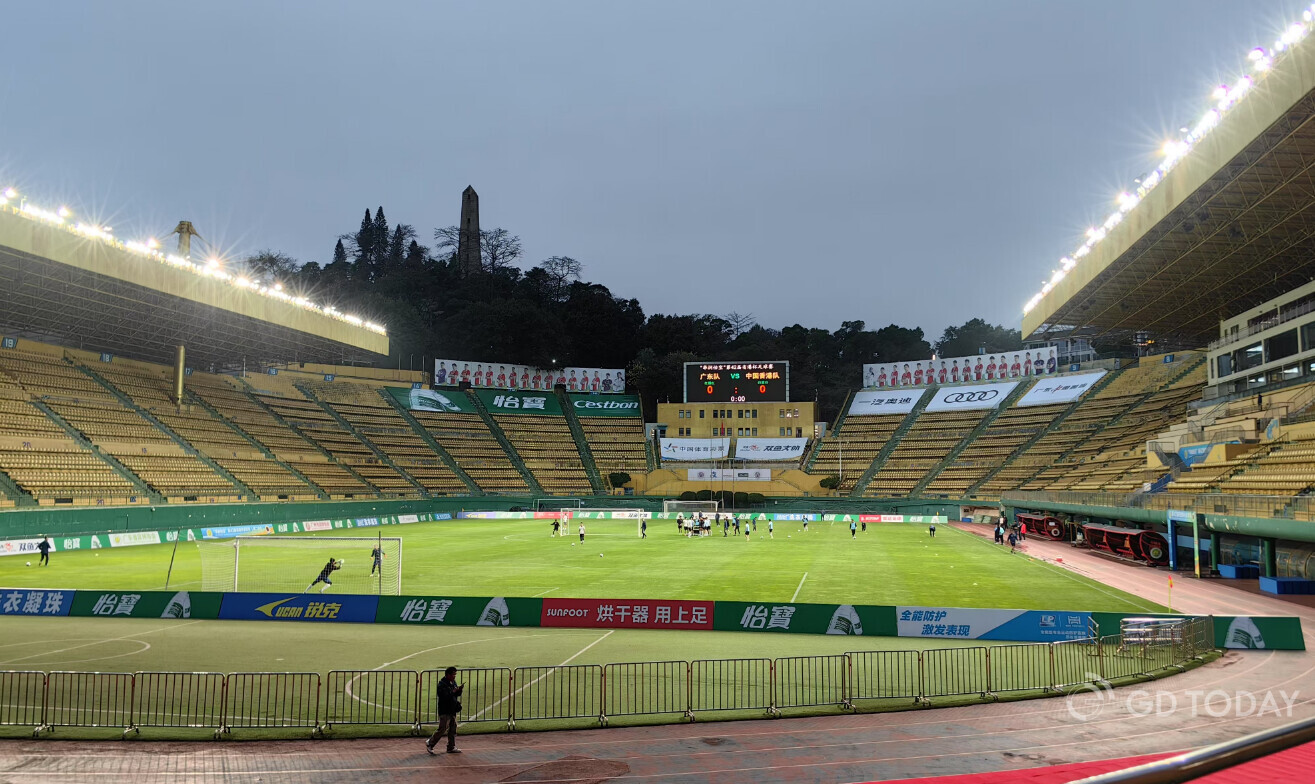The 2025 Asian Winter Games in Harbin have become more than a sporting spectacle—they've ignited a snowball effect for regional tourism and economic revival. With a 157% surge in inbound tourism orders and 5,000 daily visitors flocking to mascot-themed merchandise stalls, the "sports + culture + tourism" model has proven its power to transform a frosty landscape into a hotbed of economic activity.
Yet, as the Guangdong-Hong Kong-Macao Greater Bay Area (GBA) prepares to host the 15th National Games in November 2025, a pressing question looms: Can this subtropical powerhouse, devoid of natural ice and snow, craft its version of Harbin's success?

The lit cauldron of the 9th Asian Winter Games is pictured at the Harbin Ice and Snow World Park during the opening ceremony of the 9th Asian Winter Games in Harbin, northeast China's Heilongjiang Province, Feb. 7, 2025. (Xinhua/Zhang Tao)
North and South: Shared Logic, Divergent Paths
Harbin's Asian Winter Games—leveraging mega-events to drive composite spending (tickets, hotels, souvenirs)—has universal appeal. During the Games, tourists spent over ¥10,000 per capita, fueled by cross-regional travel and themed consumption. The GBA, home to affluent consumers and international visitors, could replicate this by integrating events like the Macau Grand Prix with the National Games. Plans are already underway to bundle discounted high-speed rail tickets and cross-border bridge passes, creating a spectate-and-explore experience.

Artists perform during the opening ceremony of the 9th Asian Winter Games in Harbin, northeast China's Heilongjiang Province, Feb. 7, 2025. (Xinhua/Chen Yichen)
Harbin's mascots "Binbin" and "Nini," dressed in floral-patterned 棉袄 (cotton-padded jackets), became cultural icons, drawing crowds to ice sculptures and cultural-creative shops. The GBA, rich in Lingnan heritage, could reimagine its own symbols. For instance, the Chinese white dolphin, the Games' mascot, might inspire digital collectables or themed blind boxes, targeting Gen-Z via social media campaigns.
Harbin's winter sports boom boosted orders for ice-snow gear and smart wearables, proving events can energize related industries. The GBA, a tech hub, could leverage AI, VR spectating, and partnerships with Shenzhen's drone makers or Guangzhou's EV manufacturers to create a "tech + sports" industrial matrix.
While Harbin wove 10 tourism routes linking 500 cultural sites into its event matrix, the GBA's dragon boat races and martial arts displays remain niche. Deeper integration could craft cohesive travel narratives, like connecting venues with UNESCO-listed Kaiping Diaolou or Macao's historic districts.

A corner of Guanye Street in Macao. (Photo: GDToday)
Innovation: Crafting a GBA Model
Focusing on the 15th National Games, the GBA could deploy AR/VR to create metaverse fan zones or AI-powered multilingual commentary, enhancing global appeal. Imagine marathons winding through Guangzhou's arcades, illuminated by projection-mapped Cantonese opera motifs.
Post-Games, Harbin's tourism routes will sustain economic gains. The GBA might convert venues into tech-driven museums or launch a "Greater Bay Marathon," blending sports with tech and heritage study tours. Night markets near stadiums, paired with e-sports festivals, could tap into a youth-driven nighttime economy.

Yuexiushan Stadium. (Photo: GDToday)
The 15th National Games offer a chance to showcase the GBA's unique blend of Chinese modernity. It can explore a "Bay Area Model" for integrating sports and tourism through technology empowerment, cultural innovation, and regional coordination. The core lies in using events as traffic gateways, culture as emotional bonds, and industries as value carriers, ultimately transitioning from "short-term spectacles" to "long-term ecosystems."
Author | Feng Huiting
Editor | Wei Shen, James, Shen He
















